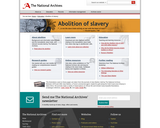
This resource examines Britain's involvement in the transatlantic slave trade using records from the National Archives.
- Subject:
- Social Studies
- Material Type:
- Interactive
- Provider:
- The National Archives (United Kingdom)
- Date Added:
- 06/21/2017

This resource examines Britain's involvement in the transatlantic slave trade using records from the National Archives.
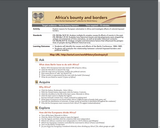
Explore reasons for European colonization in Africa and investigate effects of colonial-imposed borders.

In this lesson, students will be divided into groups and asked to analyze and evaluate editorial cartoons pertaining to late 19th and early 20th century American imperialism. Students are expected to determine the perspective of the artists. After group evaluation, students will present their finding to the entire class.

In this lesson, students will learn about British control over Palestine after World War I and how it influenced the Israel-Palestine situation in the modern Middle East. The material will be introduced through a timeline activity and followed by a PowerPoint that covers many of the post-WWI British policies. The lesson culminates in a letter-writing project where students have to support a position based upon information learned.
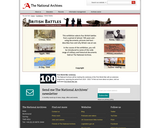
This exhibition selects four British battles from a period of almost 100 years and, using documents, pictures, and text, describes how and why Britain was at war.
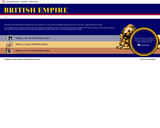
The British empire was one of the most important developments in world history. The empire was huge, it lasted a long time, and it brought tremendous changes to many parts of the world. This resource examines how and why the British empire made Britain so important.
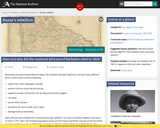
This lesson examines resistance among enslaved Africans in the Caribbean, including in Haiti and Barbados.
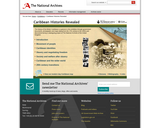
This resource explores the history of the British Caribbean through government documents, photographs, and maps dating from the 17th century to the 1920s.
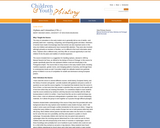
In this activity, students examine a primary source excerpt that speaks about the role orphaned children should play in the Portuguese empire. It provides insight into attitudes toward one particular group of children in an era of competition for wealth and dominance among European powers.

In this lesson, students read about how the British and French clashed over control of the North American interior during the 1700s. A set of discussion questions is provided. In an associated activity, students will role play five groups that had a stake in North America just before the outbreak of the French and Indian War in 1754.

Welcome to "Conquistadors," an Online Learning Adventure from PBS. This innovative educational resource has been created for middle and high school classrooms to learn about the Spanish Conquistadors in the New World and the legacy of their contact with Native Americans. There are extensive lesson plans for teachers and in-depth online content for students available in both English and Spanish. *Four units of study can be found on site--each relating to a different aspect of the Spanish Conquistadors in the New World. 1. Cortes and the Aztecs 2. Pizarro and the Incas 3.Orellana and the Amazon 4. Cabeza de Vaca
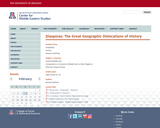
The mass movement of people is a phenomenon that has profound impact on both the losing and gaining areas as well as on the people involved. The purpose of this lesson is to acquaint students with several different diasporas throughout history and give them the opportunity to explore and analyze another diaspora and prepare a presentation on that topic.

With this digital collection, students will review documents that survey the many parts of the world swept up in French imperialism during the early modern period (1500–1800), and the many ways the French empire influenced their histories. Students will consider the following essential questions as they review the documents: 1. What were the motivations behind France’s presence in different parts of the world? How did French motives change from place to place, and over time? 2. How did French colonists see native peoples in North America, the Caribbean, and Africa? How did these peoples interact with the French? 3. How did the pieces of France’s empire fit together? Were they a single, coherent system?
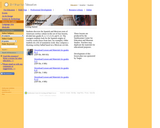
In these units, students can discover the Spanish and Mexican roots of American cowboy culture in this set of four lessons, divided into grades K–2, 3–5, 6–8, and 9–12. The youngest students look for the Spanish origins of cowboy words (lasso from lazo, for example). Older students do a bit of translation work: they compose a rhyming cowboy ballad based on a Mexican corrido.
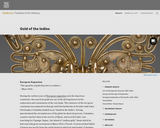
This article examines European exploration in the Americas. During the earliest years of European expansion onto the American continents, the search for gold was one of the driving factors in the exploration and colonization of the vast lands

This inquiry provides students with an opportunity to evaluate the relationship between the dramatic increase in European sugar consumption in the 18th and 19th centuries and the reliance on the labor of enslaved persons to produce sugar in the Western hemisphere. Students explore the environmental, economic, and social consequences of increased sugar production. Students work with featured sources focused on sugar production and the treatment of enslaved workers on sugar plantations.

Students will learn basic information about the Incan empire and its downfall through selected readings and discussion activities. Students will futher their understanding regarding the clash of Spanish and Incan society by creating newspapers detailing the events, people, and places during the Spanish conquest of the Incan Empire.
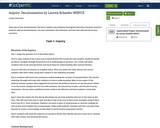
Overview of how decolonization has led to modern day problems throughout formerly colonized countries. Students will see decolonization, the neo-colonialism that followed, and how that affected the former countries.

In this lesson, students will link what they already know about Aboriginal Australians to the new topic, identify basic and clear differences between modern society and Aboriginal living, and identify what they would like to learn more about Aboriginal Australians.
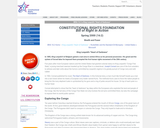
In this lesson, students read about the history of the Congo and examine how true events inspired Joseph Conrad's novel "Heart of Darkness." A set of discussion questions is provided. In an associated activity, students will role play a U.S. congressional committee deciding whether to impose standards on American corporations doing business in undeveloped countries.